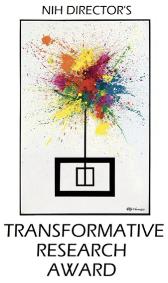|
Bio lasers and Laser particles Since Theodore Maiman demonstrated the first laser a half century ago, stimulated emission and lasing have made a tremendous impact on modern science and technology. Although lasers and the coherent light they emit are omnipresent today, lasing has remained a man-made phenomenon. Generation of laser light has so far relied on artificial or engineered optical gain materials, such as doped crystals, semiconductors, synthetic dyes, and purified gases; biological materials and living organisms have not been explored as gain materials for lasers. This project introduces fluorescent proteins as a new optical gain material. The proposed research will investigate the optical amplification characteristics of biologically produced, biocompatible and biodegradable fluorescent proteins that have high quantum yield at various wavelengths across the entire visible spectrum. The fluorescent proteins offer unique properties not shared by any existing gain materials. For example, they can be expressed as functional transgene in a wide variety of organism. Intellectual merit of this project is harnessing these properties of fluorescent proteins to demonstrate novel photonic device concepts, including protein lasers in solutions and in condensed-state forms, as well as biological lasers based on single cells expressing fluorescent proteins will be explored. Successful completion of the proposed research will improve our ability to control and optimize the stimulated emission properties of fluorescent proteins and demonstrate miniature lasers and amplifiers built on the biological platform. Furthermore, it is expected to provide insights into a range of novel protein-based devices and technologies for practical applications. For example, lasing within the tissues and inside the cells may offer new possibilities of nonlinear deep imaging and intracellular sensing for bioengineering and medical diagnosis. The ability to generate laser light in vivo may enable new approaches in light-controlled therapy and drug activation.
Relevant papers 1. Single cell biological lasers. Nature Photonics 2011;5:406-410. 2. All-biomaterial laser using vitamin and biopolymers. Advanced Materials 2013;25:5943-5947. 3. Lasing from fluorescent protein crystals. Optics Express 2014;22:31411-31416 4. Bio-optimized energy transfer in densely packed fluorescent protein enables near-maximal luminescence and solid-state lasers. Nature Communications 2014 5:5722. 5. The potential of optofluidic bio-lasers. Nature Methods 2014;11:141-147. 6. A simple approach to biological single-cell lasers via intracellular dyes. Advanced Optical Materials 2015;3:1197-1200. 7. Cellular dye lasers: lasing thresholds and sensing in a planar resonator. Optics Express 2015;23:27865-27879 8. Intracellular microlasers. Nature Photonics 2015;9:572-576. 9. Laser particle stimulated emission microscopy. Physical Review Letters 2016;117:193902. 10.
|

















